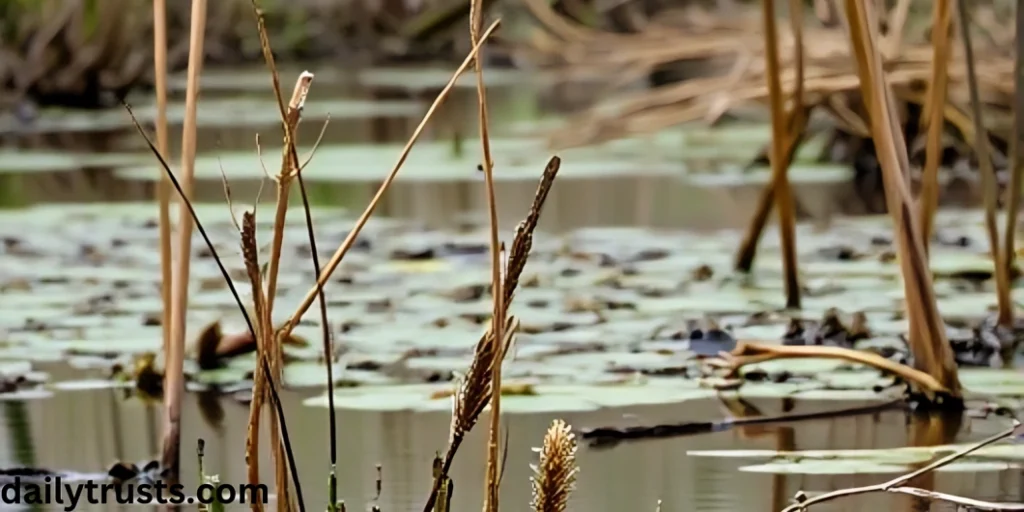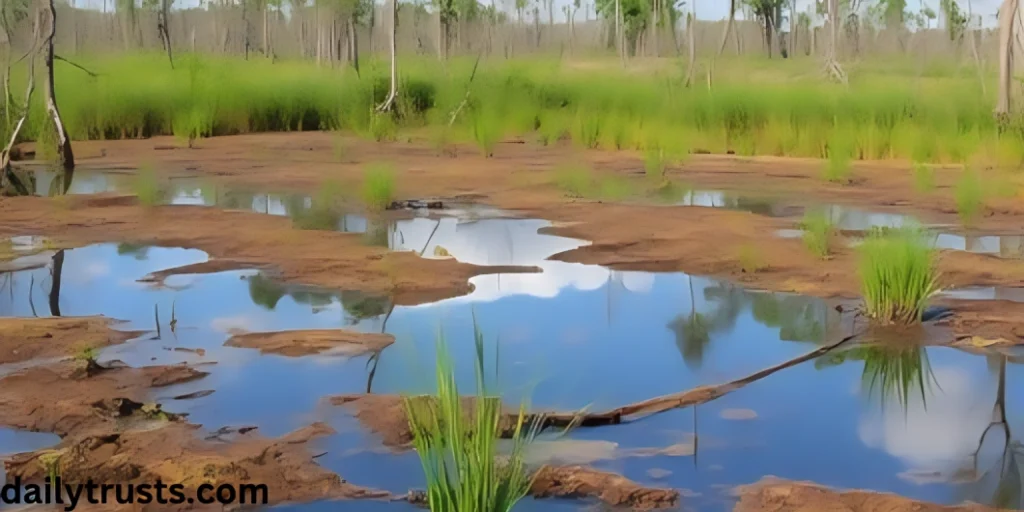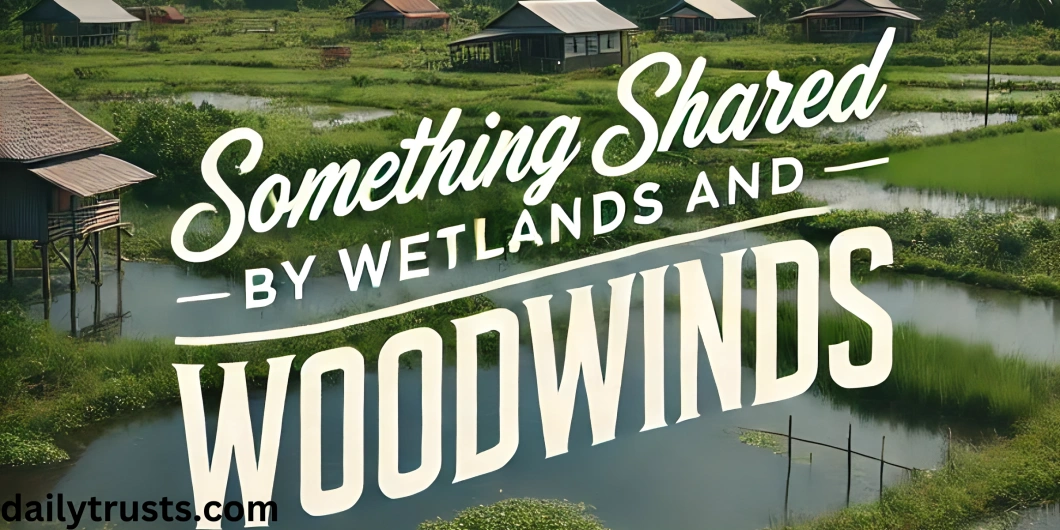Something Shared by Wetlands and Woodwinds: A Unique Connection
When one considers woodwinds and wetlands, the relationship may become clear. While woodwinds remember the delicate sounds of instruments like the flute, clarinet, and oboe, wetlands create visions of rich, saturated environments alive with fauna. But upon closer inspection, it becomes clear that these two apparently different things have something fascinating in common.
This article explores the unexpected connections between woodwinds and wetlands, emphasizing their diversity, acoustics, natural materials, environmental significance, and cultural value.
Also read:
Natural Materials: The Essence of Life and Music

Wetlands: A Hub of Organic Richness
Rich in organic matter and saturated with water, wetlands are some of the planet’s most productive ecosystems. From tall trees to tiny grasses, these habitats are home to a wide variety of plant life that thrives in the rich in nutrients, and wet soil. Peat and decomposing plants are examples of organic matter that adds to wetlands’ distinctive composition and supports a thriving environment.
Woodwinds: Instruments of Nature
As the name suggests, woodwind instruments are typically made of wood. The wood selection has a significant impact on the instrument’s durability and sound quality. Due to their workability and tonal qualities, woods like maple, boxwood, and grenadilla have historically been preferred. These instruments, derived from trees, have an innate link to nature because some grow in or near wetland areas. This connection to biological elements emphasizes how wetlands and woodwinds share a common foundation.
Wetlands: Nature’s Essential Ecosystems
Often called the “kidneys of the Earth,” wetlands are places where water covers the earth, giving plants and animals a special habitat. These ecosystems, which include fens, bogs, marshes, and swamps, are essential to the well-being of our world.
Key Functions of Wetlands:
- Water Filtration: Before water enters rivers, lakes, or aquifers, wetlands filter pollutants and sediments, serving as natural water purifiers.
- Flood Control: Wetlands save nearby areas from floods by absorbing extra rainfall.
- Habitat for Biodiversity: Numerous species, like as fish, amphibians, birds, and insects, call them home.
- Carbon Sequestration: By storing carbon, wetlands lessen the effects of climate change.
Biodiversity and Variety: The Spice of Life and Sound
Wetlands: Biodiversity Hotspots
Wetlands’ biodiversity is well known. Amphibians, birds, animals, insects, and plants are among the many species that call them home. Supporting a variety of living forms and preserving ecological equilibrium depends on this diversity. Many species use wetlands as breeding habitats, which helps ensure their survival and spread. Wetlands are vital to the natural world because of the diversity of life they support.
Woodwinds: A Symphony of Diversity
Many woodwind instruments are represented by a wide variety of sounds and styles.. Woodwind instruments provide a wide range of auditory experiences, from the deep, resonant notes of the bassoon to the high-pitched tones of the tiny. Like the species in a marsh, every instrument in the woodwind family has distinct qualities. Similar to the natural diversity present in wetlands, this diversity enables a broad range of musical expressions.
Sound and Acoustics: Nature’s Music and Human Craft
Wetlands: Natural Soundscapes
Sound is alive in wetlands. A distinctive audio environment is created by the frog chorus, bird songs, and reed rustling in the wind. These calming natural soundscapes influence wetland residents’ behavior and communication. Wetland noises are evidence of the health and significance of these ecosystems in the natural world.
Woodwinds: Crafting Musical Soundscapes
Woodwind instruments use air vibration to create sound. Each instrument’s dynamics are influenced by its material and design, which results in unique tonal characteristics. The art of creating woodwinds is to utilize the inherent qualities of wood to create music that elicits a variety of feelings. Woodwinds’ complex interplay of material, design, and sound is similar to wetlands’ natural acoustics in that each component enhances the entire soundscape.
Ecological Impact and Sustainability: Preserving Life and Craft

Wetlands: Guardians of the Environment
Wetlands are essential to preserving the health of the environment. By eliminating impurities and enhancing water quality, they serve as organic water filters. By absorbing excess water, wetlands also operate as flood buffers, lessening the effects of natural disasters. In order to slow down climate change, they are also essential for sequestering carbon. Wetlands provide ecological functions that are essential to the health of our planet.
Woodwinds: Sustainable Craftsmanship
The manufacture of woodwind instruments brings up sustainability issues, especially regarding wood procurement. Using alternative materials and practicing responsible forestry is crucial to preventing environmental damage from woodwind crafting. People are increasingly understanding the need to balance ecological responsibility and artistic expression. This is comparable to the conservation work needed to save and maintain wetlands.
The Shared Element: Wood
The most apparent connection between wetlands and woodwinds lies in their shared reliance on wood. Wood has historically been the primary material for crafting woodwind instruments, and many of these woods originate from regions similar to wetlands.
Woods Used in Woodwinds:
- Grenadilla (African Blackwood): Native to Africa, this dense and durable wood is commonly used in clarinets and oboes.
- Boxwood: Historically used for recorders and older instruments, boxwood is valued for its smooth texture.
- Maple: Used in larger woodwinds like bassoons.
Wetland Trees and Their Role:
Wetlands are home to various tree species, including willows, cypresses, and mangroves. These trees thrive in waterlogged conditions and provide:
- Raw Materials: Wetland trees historically supplied wood for crafting.
- Ecosystem Support: They stabilize soil, provide shade, and support biodiversity.
Cultural Significance: A Shared Heritage
Wetlands: Cultural and Spiritual Value
Many communities around the world place a high cultural and spiritual significance on wetlands. Literature, art, and folklore frequently use symbols of mystery, fertility, and life. Because they preserve objects of earlier civilizations, wetlands are also significant historical and archaeological sites. Wetlands’ significance extends beyond their ecological roles, as evidenced by their cultural legacy.
Woodwinds: Instruments of Cultural Expression
Numerous cultural musical traditions rely heavily on woodwind instruments, which have a long history. Folk music and classical orchestras are just two examples of how woodwinds have conveyed human emotions and experiences. Humans discovered one of the earliest musical instruments, the flute, which has been portrayed in ancient artwork. Woodwinds’ cultural relevance emphasizes their function in human expression and the common musical legacy.
Conclusion: Something Shared by Wetlands and Woodwinds
The fascinating connection between wetlands and woodwinds reveals the intricate relationship between nature and human creativity. Wetlands, as vital ecosystems, nurture life and sustain biodiversity, while woodwinds, as instruments crafted from the very trees found in or near wetlands, enrich our lives through music.
This shared reliance on natural materials highlights the importance of conservation and sustainability in both spheres. Just as wetlands serve as nature’s purifiers and biodiversity hotspots, woodwinds produce a symphony of diverse tones that reflect the beauty of life itself. The cultural and spiritual significance of wetlands mirrors the profound role woodwinds play in preserving and expressing human emotions across generations.
Both demand our attention and care, as their survival is essential for ecological health and artistic heritage. To protect this harmony, we must support wetland conservation, adopt sustainable practices in woodwind craftsmanship, and recognize the interconnectedness of natural and cultural elements. By preserving wetlands and sustainably crafting woodwinds, we ensure a legacy of life and melody for future generations.
FAQS Something Shared by Wetlands and Woodwinds
Here are some frequently asked questions about the Something Shared by Wetlands and Woodwinds. We’ve provided comprehensive answers to ensure you have all the information you need. If you still have any questions or require further clarification, our team of experts is here to assist you.
Don’t hesitate to contact us at any time—we’re always just a message away and ready to help!
Q1. What is the shared connection between wetlands and woodwinds?
Both wetlands and woodwinds share a reliance on natural materials like wood. Woodwind instruments are crafted from trees.
Q2. Why are wetlands important to the environment?
Wetlands serve as natural water purifiers, provide flood control, store carbon, and support rich biodiversity, making them essential to our planet’s health.
Q3. How does wood relate to woodwind instruments?
Woodwind instrument makers traditionally craft them from wood types like grenadilla, boxwood, and maple. The choice of wood affects the durability, sound quality, and tonal richness of the instrument.
Q4. What role do wetlands play in cultural heritage?
Many communities deeply value wetlands, seeing them as symbols of mystery, fertility, and life.. They also preserve historical artifacts and reflect ancient civilizations’ legacies.
Q5. What are some sustainability practices in woodwind craftsmanship?
Sustainable wood sourcing, responsible forestry, and exploring alternative materials are critical practices to reduce the environmental impact of crafting woodwind instruments.
Q6. How can we protect wetlands?
Supporting conservation organizations, advocating for sustainable land-use policies, reducing pollution, and participating in reforestation efforts can help protect these vital ecosystems.
